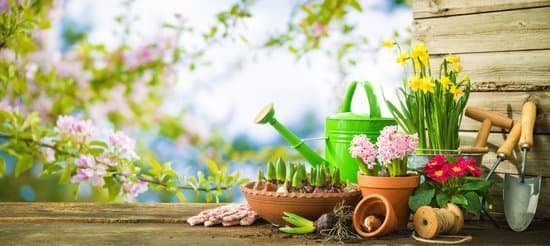Introducing Edible Landscaping in Northern Colorado
Edible landscaping is a great option for gardeners in Northern Colorado, as it brings the culinary and aesthetic benefits of gardening together. This type of gardening is becoming increasingly popular due to its ability to provide a beautiful landscape while also providing edible outputs in an efficient and low-maintenance way. Edible landscaping not only provides the basic vegetation that traditional landscaping does, but it also introduces fruit trees and plants with edible qualities beside shrubs, flowers, evergreens, water features and other garden accents. Not only are you able to enjoy the beauty of your garden, but you can also benefit from the produce that is grown and harvested right in your own backyard!
When designing an edible landscape in Northern Colorado, there are best practice techniques that can be employed to ensure success. During the planning stage, gardeners should choose appropriate plants with cropping periods that match their climate in order to get optimal yields from both ornamental plants and edibles. Soil should also be well tended since it plays a vital role in plant health, and organic mulch can help both retain moisture and reduce weeds. In addition to monitoring soil moisture levels throughout the season, careful attention should be paid to pests or diseases that could be detrimental to growth or production yields if left unattended for too long. Finally, new technologies such as automation watering systems or climate controllers can help increase yields by allowing precise conditions for plants to grow successfully all year round.
Common & Rare Herbs & Produce In Northern Colorado
Gardening in Northern Colorado is full of opportunities for both experienced and aspiring gardeners. With temperate conditions and high elevation, gardeners of all skill levels can grow a wide variety of plants including herbs, fruits and vegetables. Some of the more common plants grown in this region include tomatoes, squash, corn and beans.
Broccoli and cabbage are also popular vegetables among northern Colorado gardeners. There are a variety of different options available when selecting what type of broccoli or cabbage to grow such as vegetable-tolerant heirloom varieties or quick-to-grow hybrids. Herbs are also abundantly found in gardens located in Northern Colorado with some of the most widely grown being rosemary, oregano, and basil. Rarer herbs such as dill and lavender are becoming more commonplace as the popularity of gardening continues to rise in the area.
Most fruits and vegetables provide numerous benefits to our physical health due to their vitamins and minerals content but herbs offer a tonic for emotional wellness as well with many therapeutic properties reported from their use. For example, lavender is believed to foster relaxation while mint helps clear mental fogginess that may accompany stressive times. Taking advantage of these benefits can help gardeners cultivate emotional health alongside physical welness which adds value not just to one’s eating habits but also overal lifestyle.
Container Gardening In Northern Colorado
Northern Colorado is known for its cool climate and beautiful scenery. It’s also a great place to garden and work with container gardening, which is a type of gardening where plants are grown in containers like dishes or planters instead of in the ground. Container gardening has many advantages over traditional garden methods. You can move your container around depending on the lighting needs of the plants, control salt build-up from salinity in soil, and even adjust drainage levels more easily compared to regular planting beds.
When it comes to containers, it is important to use ones that are appropriate for the types of plants you’re cultivating; some need more room while others may prefer shallower containers. For example, vegetables or herbs may grow better in large pots or raised containers so they have enough root depth, while tiny succulents work better when planted in shallow dishes with limited space for growth. When it comes to choosing a material, clay pots tend to be lightweight and have great water absorption and breathability properties whereas plastic ones might suit better if you’re looking for something that will last longer before needing to be replaced.
It’s essential to keep an eye out for proper drainage when selecting your container; you need enough space for excess water to escape without causing damage to either your home or your plant. Adding small stones at the bottom of each pot helps maintain proper drainage as it allows more water to flow out through them at a quicker rate. Lastly, make sure you feed the plants regularly with well-balanced fertilizer together with natural compostable material such as lawn clippings when available – this adds valuable nutrients back into the soil that helps fuel growth!
Growing in Limited Spaces
Gardening in northern Colorado can be a challenge if you don’t have access to ample direct sunlight and protection from the wind. These elements combined with cold temperatures, high elevation and dry climate leads to unique gardening conditions. In order to increase your chances of success, it is important to understand your space’s constraints and plan accordingly. Here are some tips for gardening in limited spaces in northern Colorado:
Firstly, consider covering plants with mesh or shade cloth during extreme weather conditions, such as very hot days or windy stretches. This can help protect them from overexposure and ensure that they stay healthy and vibrant even during the harshest temperatures. Additionally, make sure to choose plants correctly; select varieties that can thrive in both sun and partial shade depending on the conditions of your garden. It is also advised that you mulch around plants for insulation from cold winter soils as well as keeping soil moist during the hotter months. Another useful tool for gardening in limited spaces is adding trellises or poles to support climbing vines; this allows them more access to sun while also providing additional stability against strong winds. Finally, water wisely by making sure not to overwater your gardens because especially in more exposed locations this can lead to erosion caused by heavy rainfall runoff. With these tips and tools for gardening in northern Colorado, you can successfully enjoy all the benefits of having a small garden even with generally unforgiving weather conditions!
Dealing with Unusual Plant Pests In Northern Colorado
Northern Colorado’s growing conditions can create quite a challenging environment for gardeners, as many unusual plant pests find the region especially conducive to establishing an infestation. This makes it important for home gardeners to be aware of the more common pests and how to treat them if they should crop up.
The most typical plant pests found in this area are Japanese Beetles, Tent Caterpillars, Aphids and Spider Mites. Japanese Beetle populations tend to swell during the summer months, taking advantage of the region’s moderate climate and humidity. These insects feed on leaves of various plants with nearly 300 species reported as targets in previous studies. An infestation of beetles can easily strip a plant bare and destroy a garden in no time. To treat an infestation naturally, try using concoctions made of soap or neem oil solutions, garlic spray or yellow sticky traps that provide a natural way to attract and trap the beetles without using chemical insecticides.
Tent caterpillars make their presence known by forming webs or tents on tree branches. They will eat large amounts of foliage from trees as well as any other plants nearby if not treated promptly. A soapy solution applied directly can keep these worms at bay while larger infestations could require more targeted solutions such as pyrethrins-based sprays designed specifically to target caterpillars in the garden space.
Aphids are a particularly tiny pest species that pose a variety of potential problems including sooty mold diseases and leaf yellowing due to sap-sucking activity on plants. In many cases they are drawn by stressed out plants, so keeping plants healthy is key in preventing them from settling in your yard or garden spaces. Insecticidal-soap based solutions work great here too if already present, however be sure not to over-apply otherwise other helpful bugs like ladybugs will also be killed off inadvertently! Natural predator attractors such as flowering herbs that lure ladybowls are always recommended when treating aphid infestations organically alongside other means such as improved watering habits or introducing competitive species (i.e. Nasturtiums).
Finally, Spider mites love hot dry weather conditions found in Northern Colorado during certain times of year which makes it important for greenhouse owners and outdoor gardeners alike to remain vigilant in monitoring their gardens for signs of these arachnids before overt damage is done! Like with all pest issues mentioned previously, natural solutions prevail once again when treating spider mite problems – steeped cinnamon bark sprayed onto affected areas has been known to allow successful control while supporting all living creatures inside your yard’s ecosystem at the same time!
Harvesting & Preservation Techniques for Northern Colorado
Harvesting: The best harvesting techniques depend on the crop, as well as the variety grown. Some crops must be harvested at the peak of ripeness, while others may benefit from picking while still immature (say, green beans). In terms of timing, look to the instructions on seed packet labeling for guidance. For instance, carrots and beets should be pulled when they reach their ideal size for eating. Tomatoes should be held gently in a cupped hand to avoid bruising them when being removed from the vine.
Preservation: There are several methods for preserving produce from Northern Colorado gardens. Canning is a popular choice as it allows for reuse and long-term storage. Freezing is also an attractive option and many fruits and vegetables freeze very well. For more sensitive veggies like leafy greens, drying is a great way to extend shelf life — either air drying or using a food dehydrator works well! Finally, pickling is an excellent way to use up small amounts of extra produce or take advantage of bumper crops that would otherwise go to waste.
Conclusion
Gardening in Northern Colorado can be a rewarding and enjoyable experience. With the unique climate of the region, gardeners must consider a variety of factors when planning their outdoor space. It is important to understand hardiness zones, temperature fluctuations, watering schedules, and local pests that may affect plants in the area. Knowing the seasonal weather patterns will also be beneficial when deciding which plants to grow or what type of maintenance is required for optimal growth of vegetation. Additionally, research on manure-based fertilizers and basic pest control methods should be considered to help create an eco-friendly garden. For additional tips, gardeners can take advantage of resources at various local nurseries, greenhouses, and cooperative extension offices to help make gardening in Norther Colorado a success.

Welcome to my gardening blog! I am passionate about plants and enjoy sharing my knowledge and experiences with others. In this blog, I will write about everything related to gardening, from tips on how to get started to updates on my own garden projects.





